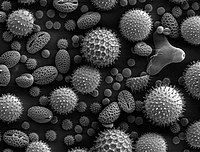
Photo from wikipedia
Abstract Lithium niobate (LiNbO3) crystal has been widely used in integrating optical and acoustic devices. However, direct bonding of LiNbO3 to Si-based materials is still a challenge due to the… Click to show full abstract
Abstract Lithium niobate (LiNbO3) crystal has been widely used in integrating optical and acoustic devices. However, direct bonding of LiNbO3 to Si-based materials is still a challenge due to the large coefficient of thermal expansion mismatches. In this paper, strong bonding strength of the LiNbO3/glass pair was obtained via the optimized O2 plasma activation followed by N2 plasma treatment. After the pre-bonding was accomplished at room temperature, the bonded pair was annealed at 150 °C for 12 h. A defect-free and tight bonding interface was confirmed by the scanning electron microscopy and transmission electron microscopy. Based on atomic force microscopy, water contact angle and X-ray photoelectron spectroscopy characterizations, both LiNbO3 and glass surfaces became smoother and more hydrophilic due to the densities of OH and N-related groups increased. Additionally, combined with the bonding strength obtained via different plasma activated processes, we demonstrated that the mechanism of the enhanced bonding strength could be attributed to N-related covalent bonds formed across the bonding interface. Furthermore, the excellent optical transmittance of LiNbO3/glass bonded pairs indicated this facile bonding process can meet the demand of high-performance glass-on-LiNbO3 devices.
Journal Title: Applied Surface Science
Year Published: 2018
Link to full text (if available)
Share on Social Media: Sign Up to like & get
recommendations!